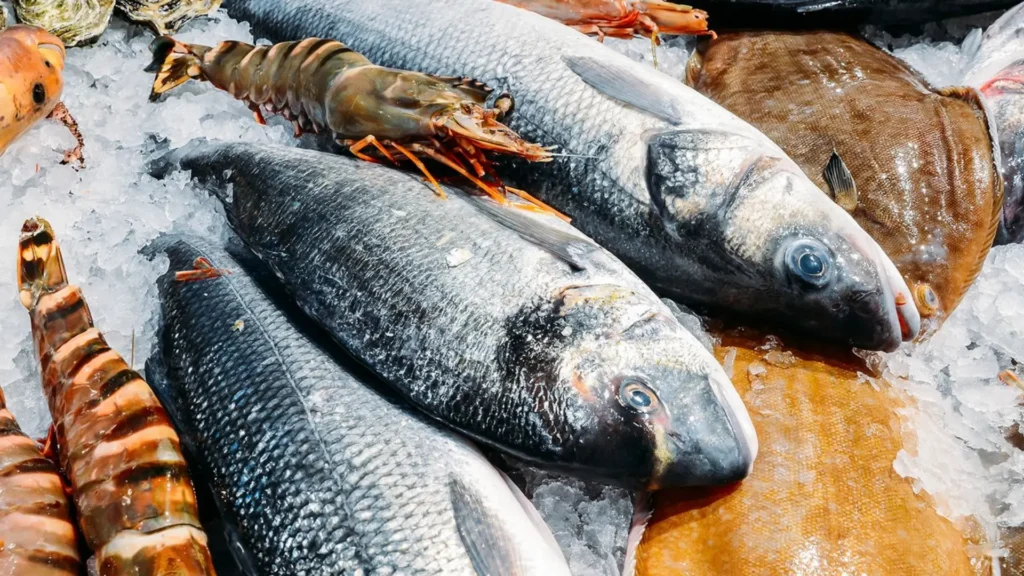As you wander through the bustling lanes of your local fish market, you’re not just there to buy seafood; you’re stepping into a crucial role in marine conservation. By choosing sustainable options, you’re supporting fisheries that prioritize the health of ocean ecosystems. Look for labels like MSC or ASC and don’t hesitate to ask vendors about the source and method of catch. This isn’t just about making an informed purchase—it’s about contributing to a larger movement. But how can you be sure you’re making the right choice? Consider this your starting point to understanding the intricacies behind each label and claim.
Understanding Sustainable Seafood
To make informed choices, it’s vital to understand that sustainable seafood is sourced in a way that conservates marine populations and ecosystems. You’re not just buying fish; you’re making a decision that impacts ocean health and future fish stocks. Sustainable seafood practices ensure that species are harvested at a rate where they can replenish, and the methods used minimize environmental impact.
This concept hinges on several critical factors, including the source of the seafood, the methods used for fishing or farming, and the management of the fisheries. Wild-caught fish should come from populations that are robust and well-managed.
On the other hand, farmed seafood, often referred to as aquaculture, must be managed to avoid pollution and the use of harmful chemicals, while conserving water and other resources. Responsible aquaculture practices contribute to relieving pressure off wild fish populations by providing an alternative source of seafood.
Understanding these aspects helps you make choices that support sustainable fisheries and aquaculture operations, aligning with your values of environmental stewardship and ethical consumption.
Best Practices for Seafood Selection
When selecting seafood, it’s crucial you choose options that align with sustainable practices to ensure you’re supporting healthy marine environments. You’ll want to look for labels and certifications that indicate sustainable harvesting, such as the Marine Stewardship Council (MSC) or Aquaculture Stewardship Council (ASC). These certifications help ensure that the seafood you purchase comes from sources that maintain ecological balance and protect ocean biodiversity.
Consider the species’ origin, as local seafood often has a lower carbon footprint compared to items that have traveled long distances. Ask fishmongers about the traceability of their products, including where and how the seafood was caught or farmed. This transparency allows you to make informed decisions and supports practices that are beneficial to the environment.
It’s also wise to diversify your seafood choices. Opting for less popular species can reduce pressure on overfished populations and help maintain a balanced ecosystem. Explore alternatives that mightn’t be household names but are equally delicious and sustainably sourced.
Tips for Responsible Seafood Shopping
Building on how to select sustainable seafood, let’s explore some practical tips for responsible shopping at your local fish market.
First, always ask questions. Don’t hesitate to inquire about the origins of the fish, the methods used to catch it, and its sustainability status. Knowledgeable vendors should provide transparent answers that help you make informed choices.
Next, look for certification labels that indicate responsible fishing practices. Certifications like Marine Stewardship Council (MSC) or Aquaculture Stewardship Council (ASC) are reliable indicators that the seafood adheres to specific sustainability standards. These labels help you support fisheries and farms that prioritize the health of aquatic ecosystems.
Also, consider the seasonality of seafood. Purchasing fish during their peak season not only ensures better quality and flavor but also aligns with natural breeding cycles, supporting the sustainability of fish populations. You can find seasonal seafood guides online or ask your vendor for recommendations.
Lastly, diversify your choices. Opting for less popular species can reduce pressure on overfished stocks and introduce you to new flavors and textures. This approach helps balance demand across different types of seafood, contributing to healthier oceans.
As you navigate your local fish market, remember that every choice you make impacts our oceans. Opt for seafood with MSC or ASC certifications, and don’t hesitate to ask vendors about traceability and sustainable practices. By diversifying your seafood choices and prioritizing sustainability, you’re not only enjoying delicious meals but also contributing to the health of marine ecosystems. Embrace your role in this vital effort; your decisions help preserve our oceans for future generations.
Learn more:
Top Tips for Bargain Hunting at the Best Fish Markets Near You

